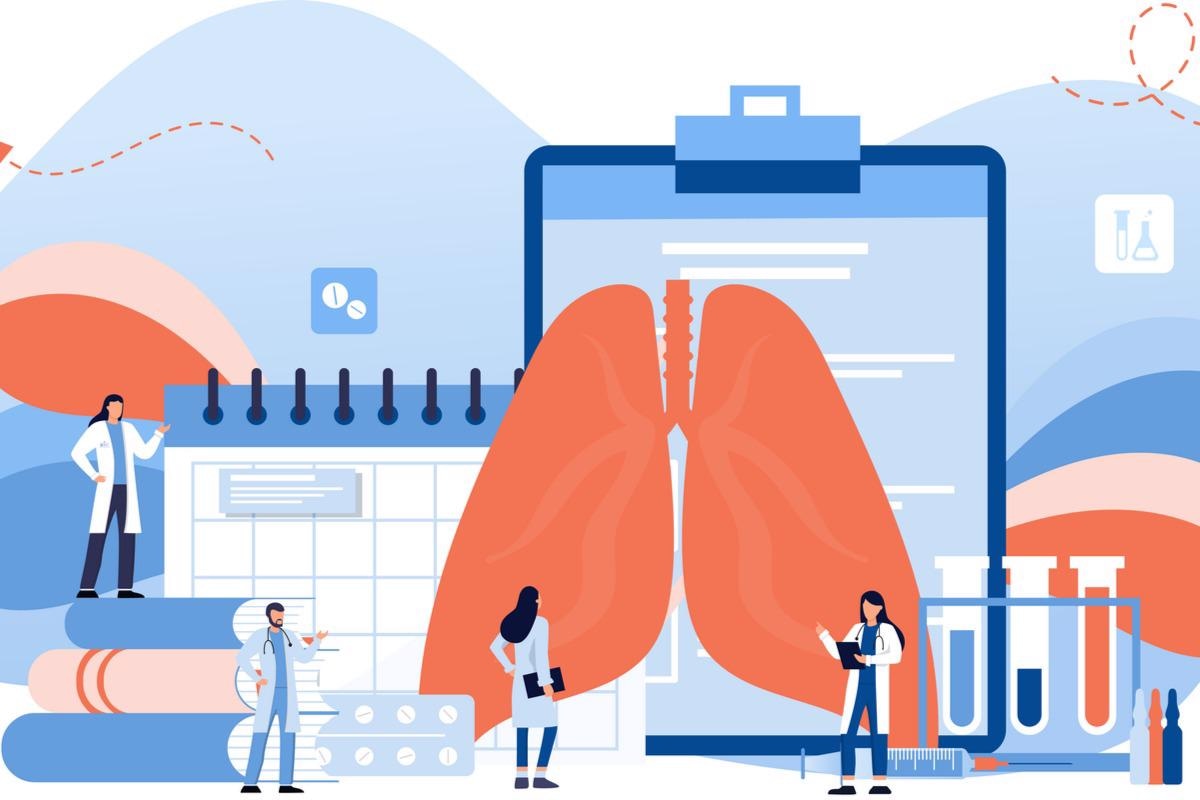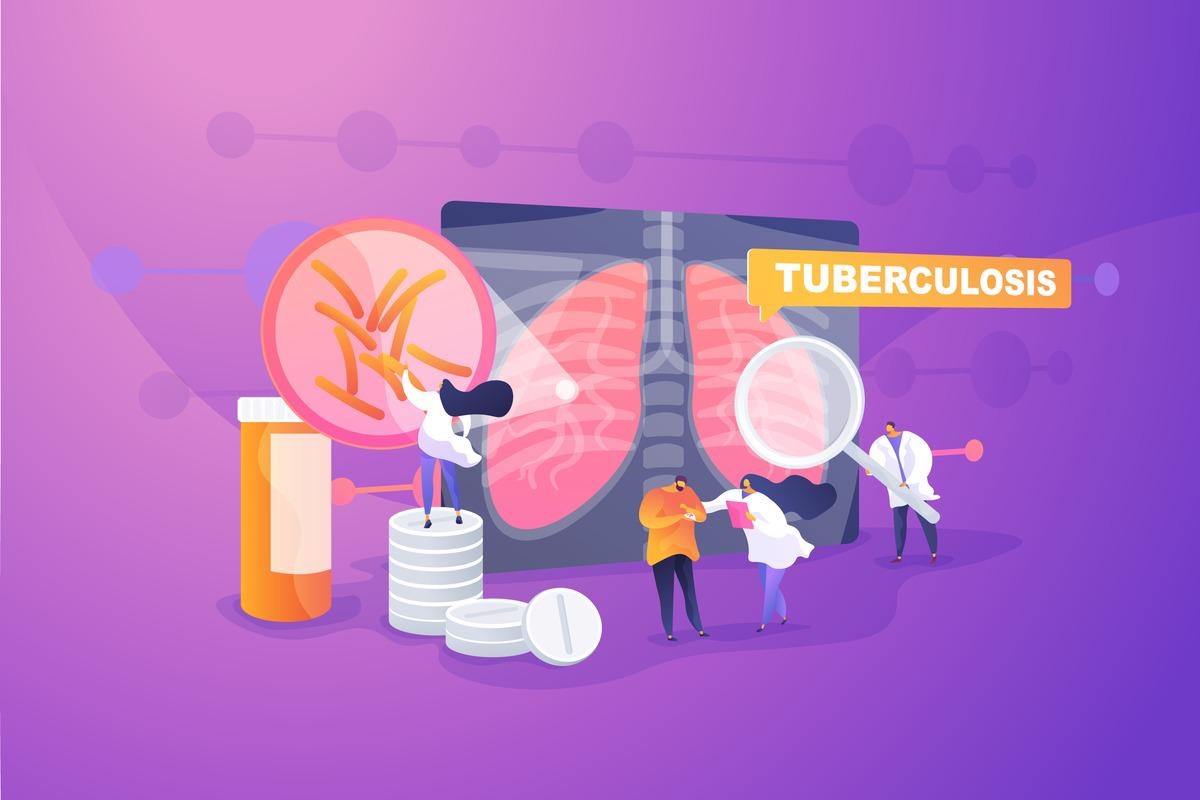
The coronavirus disease 2019 (COVID-19) pandemic, brought about by the emergence and rapid spread of the severe acute respiratory syndrome coronavirus 2 (SARS-CoV-2), monopolized public health attention for the next two years. However, the number of deaths that have occurred so far pales before the ongoing reality of deaths from tuberculosis. 2020 saw an increase in global tuberculosis deaths for the first time since 2005.
Introduction
Tuberculosis (TB) still ranks as the leading cause of death from a single infectious disease globally."
It is estimated that every single year, there are 1.5 million deaths from this mycobacterial disease. This should be compared to the 1.8 million reported COVID-19 deaths in 2020 or even the 3 million excess deaths reported that year.
The World Health Organization's (WHO) Global Tuberculosis Report for 2021 shows how COVID-19 adversely affected the situation with respect to TB. Already slow and inadequate, the management and prevention of TB have suffered severely from the start of the pandemic.
Delayed Treatment
The World Health Organization (WHO) data shows a shortfall of 1.4 million people when the number of patients on tuberculosis treatment in 2020 are compared with those in 2019 (4.9 million vs. 6.3 million, respectively). 93% of the drop in new diagnoses came from just 16 countries with a high TB burden. Overall, tuberculosis diagnosis and treatment went down by 20%, even while deaths went up by 10% - reversing all the gains since 2017.
This data comes from 84 countries, of which 10 are known, like India, to have high tuberculosis incidence and prevalence rates. Among the 10, Indonesia and South Africa experienced a shortfall of >40%, while it was 37% and 25% for the Philippines and India, respectively. The incidence was supposed to be reduced by a fifth by 2020, and the mortality by 25%, but the actual reduction was 9% and 14%, respectively.
When TB deaths are seen as not a one-off figure caused by a pandemic but rather a reflection of a constantly raging battle that takes such a heavy toll every year, the grimness of the situation relative to tuberculosis control is obvious. There are 1.8 billion people infected with TB, and 10 million new cases emerged in 2020.
Even in high-income countries like the UK, there are 4,500 new cases of TB annually, and TB control programs are administered through the National Health Service. In Africa, conversely, which harbors about a quarter of the 10 million new cases of TB that occur every year, only about one in two cases were diagnosed and treated properly.
In China, notification rates went down sharply in the first week of the wave of cases. Follow-up sputum examination at one week after two months of treatment and after the full course of treatment was found to be 8% lower in the first 11 weeks of the COVID-19 in that country, compared to the control period. Three-quarters of workers at central and primary health center levels were shifted into COVID-19 care. Over a quarter of tuberculosis patients did not turn up for follow-up because of fear of becoming infected as well as due to restrictions on travel.

Image Credit: Julia Lazebnaya/Shutterstock.com
The Picture in India
The nature of the changes in tuberculosis control following the outbreak of COVID-19 may be understood by looking at the picture in India. India is not only home to over a billion people, with a density of population that has to be seen to be believed but harbors the greatest number of tuberculosis patients in the world – 27% of global cases and a quarter of global deaths.
In 2019, 2.7 million new TB cases were detected in India, with 2.4 million notified. This indicates a rise of 12% over 2018 notifications. Most of these cases are in young people between 15 and 30 years of age, except in the Southern states, where TB is more common in the 50+ population.
It is estimated that until the start of the pandemic, almost 85% of tuberculosis patients were being detected and notified, and over 95% of detected cases were being treated, with a cure rate of 89%.
However, there was a 41% drop in notified cases in India from 2019 to 2020, along with a 21% reduction in TB preventive treatment. Drug-resistant TB treatment was accessed by only one in three who needed it.
In India, notification rates dropped by 80% during the lockdown. Vaccination rates with the Bacillus Calmette-Guerin (BCG) vaccine among children also dropped during the pandemic, increasing their vulnerability to tuberculosis.
Moreover, millions of migrant laborers left the cities where they were working to return home as lockdowns clamped into place. Unfortunately, many of them had tuberculosis, which led to a breakdown in their treatment chain. Further, the loss of earning power rendered them more susceptible to malnutrition, increasing the chances of contracting this illness.
Resource Constraints
With the onset of COVID-19, a number of non-pharmaceutical interventions (NPI) came into force, shutting down most avenues of social and outpatient interaction. This had an adverse impact on the economy as well as healthcare delivery for diseases other than COVID-19.
Tuberculosis has been among the casualties of the COVID-19 pandemic due to the diversion of care and time to the latter. Whether the laboratories that used to do tuberculosis testing to the take-over of workers in tuberculosis programs, the effects of the pandemic on tuberculosis detection, contact tracing, treatment, and monitoring have been little short of devastating.
All over the world, workers and resources were being diverted due to the demands from COVID-19 management protocols, as well as the isolation of healthcare workers who test positive or have been primary contacts of COVID-19-positive patients. Such diversion occurs away from TB prevention towards a modicum of TB treatment, in which situation, patient visits to TB clinics will probably be discouraged. However, the loss of social support and medical contacts in this situation will discourage many patients from continuing treatment.
Secondly, poor patients in at-risk environments for both diseases will find it extremely difficult to seek medical care for a cough because of the stigma. Again, the high incidence of human immunodeficiency virus (HIV) infection, anemia, and malnutrition in many African populations may significantly alter the clinical phenotype of COVID-19. Undiagnosed as well as known TB patients will be particularly hard hit by the pandemic and may expect to have less benefit from their TB treatment.
With tuberculosis and COVID-19 having similar symptoms, misdiagnosis could occur.
Drug Shortages
Due to supply chain difficulties and economic recession, TB drug shortages will likely have worsened during COVID-19. Thus, treatment may have to be modified using available drugs, or wrong combinations of drugs may be prescribed, both of which may increase the adverse effects and reduce the percentage of successful outcomes.
Children will also be at greater risk, as the pandemic impacts multiple elements of their care. This includes delayed diagnosis, lag in the initiation of treatment, lack of support systems to ensure uninterrupted drug supply and prevent household transmission of TB from adults to children.
Interruptions in the treatment of new cases and drug-resistant tuberculosis cases will boost the odds of unpredictable aberrations in the clinical course and the outcomes. With the lower quality of tuberculosis treatment, increasing drug resistance, increased dissemination of the bacilli, a higher caseload, and increasing numbers of undetected and untreated patients are likely.

Image Credit: Visual Generation/Shutterstock.com
Global funding for TB programs dropped from $5.8 billion to $5.3 billion in 2020. This took it to less than half of the $13 billion committed annually by global leaders, affecting all areas of care from diagnostics, treatment, and prevention to vaccine development.
Along with COVID-19, tuberculosis poses a formidable challenge to medical facilities, especially to the use of mechanical ventilators, especially if a COVID-19 patient is sputum-positive and therefore highly contagious for tuberculosis.
The Future
It is highly probable that the world will miss its target for Sustainable Development Goals (SDGs) relative to the eradication of tuberculosis.
Reversals in progress mean the global TB targets are off-track and appear increasingly out of reach."- The WHO's Global TB Programme Director Tereza Kasaeva
These targets include a 35% reduction in TB deaths and a 20% reduction in TB incidence by 2020, from 2015. The actual reduction was only 9% and 11%, respectively, while for 2025, the targets are 75% and 50% reductions
We now see more than 4,100 people dying from TB every single day. The COVID-19 pandemic combined with low political will and appallingly low levels of funding have reversed hard-fought gains in the fight against this age-old disease."- Lucica Ditiu, MD, executive director of the StopTB Partnership
Hundreds of thousands of additional TB patients cases will have to be managed in most countries with a high TB burden very soon. The demand for tuberculosis care is likely to experience a sudden surge once the severity of the pandemic dies down, making it necessary to set up a response mechanism suitable for an emergency situation.
On the plus side, the widespread healthcare delivery system set up to fight COVID-19 can be and should be diverted to help secure and extend the control and eradication of tuberculosis from every country in the world where this has happened. The unprecedented speed at which an indigenous vaccine was designed and developed, and rolled out, shows what can be done to end tuberculosis if there is political will and backing.
With these tools and programs in place, TB must be prioritized to avoid even higher numbers of cases and deaths over the next few years. TB vaccines, rapid point-of-care diagnostics, and improved, speeded-up cures for the infection all need to be developed rapidly and rolled out on a massive scale.
Hopefully, private-public partnerships will help provide diagnostic and vaccination resources throughout the country to all levels of society. Increased rates of early case detection and assignment to appropriately situated centers for treatment and monitoring will help prevent and reduce transmission, drug resistance, serious illness, and death from tuberculosis or its complications.
Tuberculosis is making a comebeack due to coronavirus | COVID-19 Special
References
Further Reading
Last Updated: Mar 24, 2022